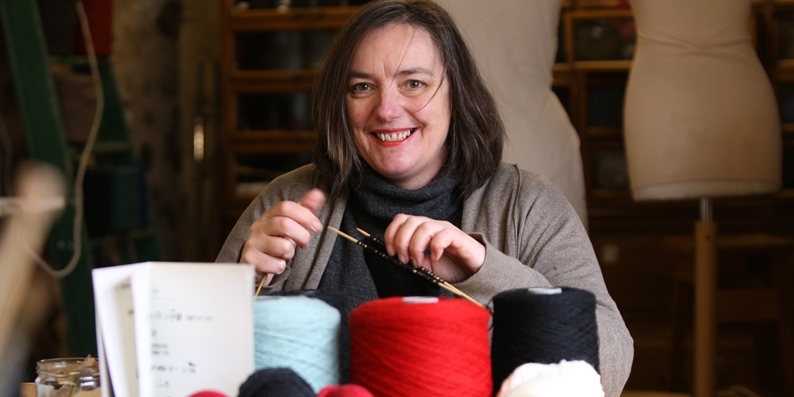Knitting from needles in Fife hit the catwalks of the capital during London Fashion Week.
Design house Meadham Kirchhoff turned to Fife-based creator Di Gilpin when it wanted hand-made knitwear. And after weeks of work by the knitwear designer and a team of about 35 knitters from across Scotland, a collection of more than 40 pieces was shipped off in time for the show.
Models sashayed down a specially-constructed runway at the old fish market at Billingsgate on Tuesday, dressed in the handiwork of Di and her co-workers, including gansey sweaters like those Scots fishermen once wore, a dress, skirts and knee-high stockings.
The admiring audience included Prime Minister’s wife Samantha Cameron and Di.
Back home at her workshop in Largoward, she told The Courier it was a real thrill to see her creations in such a major international fashion showcase, adding, “To see that style of knitting on the catwalk was absolutely fantastic. Meadham Kirchhoff have created a really fabulous look using a lot of traditional craftspeople.
“The timescale was very tight and I’m just thrilled we managed to get it finished. Hopefully it will also go on show in Paris.”
Di is no stranger to high-end fashion, having previously created collections for Canadian designer Paul Hardy and Cabbages and Roses, stocked by Jigsaw. But when she was contacted by Meadham Kirchhoff just before Christmas she had no idea who they were.
However, she said, “I sent some samples and it went from there”
Di, who runs a weekly knitting club, pulled together a team including women in Fife and some in Moray she had worked with on the Moray Firth Gansey Project. She also put out an appeal for more keen knitters and the group set to work.
She added, “We had some amazing knitters, some of them quite young. A few years ago knitting had gone into decline so it was fantastic to see 20-year-olds producing professional quality work.”
Many of the knitters would drop into Di’s workshop daily to help meet the deadline.
She said, “There was a real communal sense to the production. It was a really amazing effort.”
All the pieces were inspired by the traditional gansey sweaters which became popular among fishermen as they were hardwearing and protected them from the harsh conditions at sea. They would also feature complex designs or be stitched with initials to identify the wearer if ever he drowned.
The Moray project, to which Di was advisor, aimed to find and conserve examples of the garment and pass on the skills to make them to a new generation.
